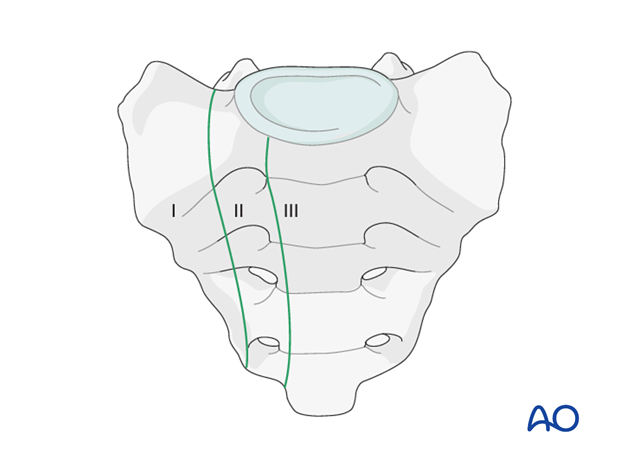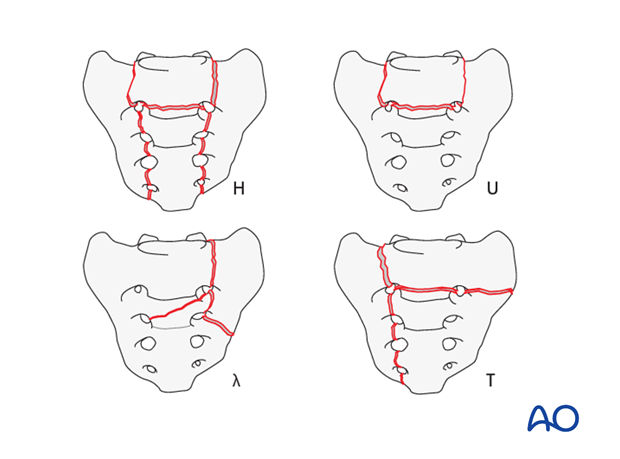Sacral fractures
Introduction
Transverse fractures of the upper sacrum involve the central zone, as defined by Denis.
They are usually combined with other vertical fracture lines (e.g. H , U, lambda, T).
Roy-Camille classified the transverse component according to its displacement: undisplaced (Type1), angulated (Type 2), completely displaced (Type 3) and impacted (Type 4).
Transverse fractures inferior to the level of the SI joint do not compromise stability, but may be important due to associated neurological injuries (Cauda equina syndrome and lumbosacral plexus injuries.)
Denis classification of vertical fractures
There are several classifications of sacral injuries.
The most common classification is the Denis classification which divides the sacrum in three zones:
• Denis I: Lateral to the foramina
• Denis II: At the level of the foramina
• Denis III: Medial to the foramina
This classification is used for vertical fractures.

Roy-Camille classification of transverse fractures
Transverse fractures are a special entity which compromises all three zones.
Pure transverse fractures are usually classified according to Roy-Camille. This classification is based on the rate of dislocation in the sagittal plane.
Transverse fractures inferior to the level of the SI joint do not compromise stability, but may be important due to associated neurological injuries (Cauda equina syndrome and lumbosacral plexus injuries).

Combined vertical and transverse fractures
A combined transverse and vertical fracture can be described according to the shape of the fracture line in the frontal plane (H, T, U, lambda).
H and U type fractures are also called spinopelvic dissociation or suicide jumper fractures. These are caused by flexion mechanism and neurologic deficit is very common.














